How To Brush A Cat That Doesn’t Want To Be Brushed

In understanding how to brush a cat that doesn’t want to be brushed, you need to think from the cat’s perspective. Why wouldn’t your cat want to be groomed?
Usually, cats love to be in charge of every activity going on around them, a first-time cat owner is likely to get intimidated by this. If allowed, they want to groom themselves. You need to learn a few tricks that could make grooming enjoyable for your cat, including how to brush the cats teeth.
Most times they resist your grooming, you shouldn’t force it. You may be using the wrong brush that is irritating your skin. In this article, you will learn How to brush a cat that doesn’t want to be brushed, and if it is as a result of any issues, you’ll learn how to resolve it efficiently.
Table of Contents
- Why does my cat resist grooming?
- How to brush a cat that doesn’t want to be brushed
- Brush for cats that hate to be brushed
- How to brush your cat
- Frequently asked questions
- Final thoughts
Why does my cat resist grooming?
Your cat will refuse you from brushing them for several reasons: The fear of being groomed, you’re using the wrong brush, they have matted hairs that cause pain, and poor dieting that doesn’t improve the condition of her coat.
Fear of being groomed
The fear of being groomed may arise as a result of past trauma experienced. Your cat may have experienced trauma from you or her formal handlers which may cause her not to want your grooming.
Your cat may also be I’ll and in serious pain, trying to touch her may aggravate the pain. Don’t be so focused on trying to groom her, try and pay attention and see if she is trying to pass a none verbal cue of an underlying health issue.
Lack of socialization at an early age could also make your cat dread being handled. This is why you should get them used to touches while they are still little. Develop a schedule and stick to it.
Using the wrong brush
Each coat of fur has specific combs you should use on them, using a different comb may result in irritation or a cat that doesn’t want to be brushed.
For short-haired cats, the flea comb will do just fine, it’ll brush through their short furs while taking out mats, dander, and dead loose hair. Using a comb with longer teeth could impact the cat’s skin, the fear of experiencing this pain will make the cat resent grooming.
Long-haired cats require a set of brushes to maintain and care for their coats, you should consider getting a set of combs and watch the video below on how to groom a long-haired cat.
For cats with double coats, using an undercoat rake is perfect as it thins out the undercoats.
Matted hairs that causes pain
Trying to forcefully untangle matted hairs can cause pain which will make your cat dislike grooming. For matted hairs that are hard to remove, schedule with a professional who will from the cat professionally and removes the mats without causing trauma.
Grooming sessions that takes forever
Grooming your feline friends for too long can cause disinterest as a result of over-stimulation. This will make them make angry sounds when they see you coming to them with a brush in your hands.
Keeping the grooming session brief is the goal since it’s in most cats’ nature not to like being handled for long.
Poor dieting
Ensure your cat foods contain omega-3 and 6 fatty acids. These fatty acids ensure they have silky, smooth, and shiny coats that are easy to groom.
How to brush a cat that doesn’t want to be brushed
brushing a cat that hates being brushed is a task we can’t skip because, if the cats are left without grooming, they will groom themselves. When cats groom themselves “Hairballs” may occur. Hairballs are when a cat ingests much of his dead hair while trying to groom himself, these balls of hair form hairballs in the intestine.
Brushing also allows us to inspect our cats for fleas and all other possible skin infections. Lack of brushing could also leave mats as strong as dreadlocks which could cause much Hanover time if the cat tries to squat and use their litter box, this will make them avoid their litter box, causing a mess in the process.
In brushing your cat that hates to be brushed you will need to use a brush that matches their coat type, giving them room to pause when they don’t feel like it, and you have to know how to brush your cat the right way.
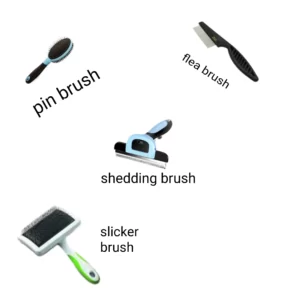
Start from the cats back or face
Before you start brushing the cat, allow them to sniff and scratch on the comb as this will make them get used to the tool being used on them. Since cats love to do their bidding, this will give them a feeling of being in charge.
The majority of cats love a brush on the back, this will differ across cats, as one will love a brush on their faces or anywhere else. Usually initiate the grooming process from spots they love then work your way around.
Watch out for when the cat starts to wag its tail in a curly manner, this signifies anger and displeasure. Once you see this sign, accompanied by a cat trying to wall away, allow them to leave.
Avoid over stimulation
At the initial start of brushing your cat’s hair, your cat will enjoy the touch as their hair follicle receptors pass on a feel-good chemical to their brains, since they act like antennas that transmit information to the brain. However, the hair follicle receptors can fail to shut down after a while leading to a sharp transition from feeling good to pain.
They also show they have reached their limit and don’t want more by walking away. This is why you should have your targets before grooming, ready your tools and work with a timer. You will be able to complete your brush grooming within the feel-good window.
Reverse psychology
Most times your cat sees you coming with a brush or her grooming kit, she may switch into the mood of: ” don’t brush me”. If this is the case with your cat, switch it up a notch. Accompany the brushing kits with catnip, this will likely replace the fear of being groomed with the hope of getting a treat.
Make sure your cat earns her treats, don’t just dish out treats because you feel like it. Treats are mainly to reinforce great behavior, to kick off with tough jobs(like grooming), training, supplements or just to show them, love.
If dish out treats just about when you want, you’ll have a cycle of a cat approaching you, you comb her back, then if you try to comb her sides, she walks away, then you make her come back with a treat. This is an example of reinforcing a bad behavior with a treat.
In cases like this, being the treats along, but inky give her after a complete brushing session.
Brush for cats that hate to be brushed
For can’t that hate being brushed, you need to know the kinds of brush to use for different coat types, which are the slicker comb,
Slicker brush for cats
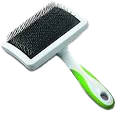
Slicker brushes are brushes with thin teeth that are slanted or curved. This is the best brush to use for short and medium-haired cats, to remove, dead and lose hair, dander, and dirt. Regular use of the slicker brush will prevent mating.
The slicker brush will help circulate blood throughout your cats body, while massaging the cat in the process, without pricking the cats skin.
Mitt brush
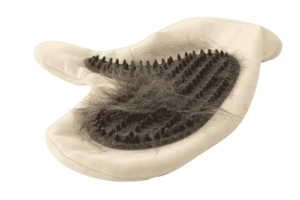
Mitt brushes are vinyl gloves that goes over the top of your hand, then it has a toothed side underneath it which is used to brush the cat. Since we want to make grooming pleasurable, this brushes make your cat feel like you’re petting them.
Your cat may not be able to tell the difference between your hand and the brush since it has short teeth that are effective in removing dead hair, dirt, and dander while leaving your cat to coat smooth and slick. The good thing about the mitt brush is that it can be used for all coat types.
Dual sided brush
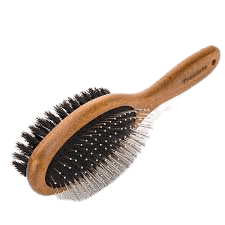
Dual-sided brushes are suitable for cats with short or medium coats. They have a soft bristle brush on one of its sides and a fine tooth brush on the other, which is effective in spreading natural oils and removing mats. If you know what you’re doing, you will find both sides of this brush useful.
Shedding Comb
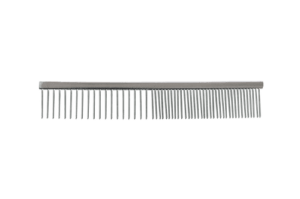
There are numerous types of shedding combs, we recommend the greyhound and the poodle comb. The greyhound comb teeth are closer to each other, they are great for short and medium hair cats. The poodle comb has thin teeth that are widely spaced. This makes it a great option for long-haired cats.
Shedding brush
The shedding brush will help take care of loose hairs while massaging the cat. Get the shedding brush to the length of your cat’s hair.
How to brush your cat
Have you ever gotten your hair done by a professional? The feel of someone playing with your hair professionally can instantly make you relaxed. Imagine having tangles on your hair, and you go to a saloon, only for the stylist to try taking of them forcefully. Ouch!
This is the same feeling for your cat, if their sessions are done well promptly, you won’t be at risk of getting swatted with their sharp claws, cos if you cause the pains, they’ll react, God knows how. So, we are focussing on how to do the cat brushing the right way.
Brush in the direction of the cats fur lay
A strain is caused by brushing against the grain of your cat’s fur, the cat gets to feel more pull, it’s more like someone pulling your hair. The best way to comb a cat’s hair is by brushing in the natural direction of the cat’s fur.
This may not effectively take away the loose hairs, you may want to improvise by using a blower, but get the cat used to the blower by letting them sniff and play a little with it.
Brush their coats regularly
Brushing regularly reduces the likelihood of mats forming, which makes grooming less painful for your cat. Brushing regularly also helps to keep hairs from littering around your house. Cats love to rub their faces and bodies on surfaces, and if they have loose hair, it could be left behind in their trail.
A person who is allergic to hairs will have issues in this case. This is why we include a brush in our cat pod when we build one ourselves. A long-haired cat will need 3 or more grooming sessions weekly, while a short-haired will need a grooming session 1 – 2 times weekly.
It is best to remove matted hair professionally
Except you’ve learned how to remove matted hairs without causing much pain to the cat’s tissue paper-like skin, allowing the professionals to do their trade is the best option here.
Finally, always start from the most comfortable place, then move up to other parts of the cat’s body. Reward a great cat session with catnip or treats.
Frequently asked questions
Can you brush your cat too much?
Yes, you can brush your cat more than required, when you brush them every single day. Brushing this often will lead to irritations on the skin of the cat, brush burns, or bad patches. The recommended grooming session week is once or twice per week, this will keep the cat’s coat tangle-free.
My cat attacks me when I brush her
The fear of pain from taking off mats forcefully will make your cat attack you when you brush her in any pressured way. You need a catnip and the specific comb for your cat’s coat type, this is how you can stop this act effectively.
Final thoughts
You have to perceive your cat as a friend you want to groom. Pay attention to the cat’s body language so you can know when you’re doing something painful, then you can avoid this in the next grooming session.
Use brushes that are friendly to the cat’s skin type, this will evade any situation of you causing injury or pains to the cat’s skin. Start your grooming from a comfortable place the cat loves, then move to another place. Make your grooming session brief.
If you follow this guide thoroughly, you will hardly have more issues grooming your cat.

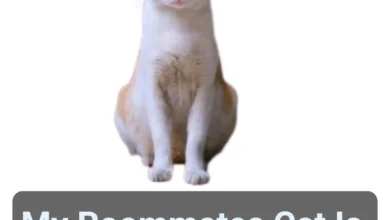


2 Comments